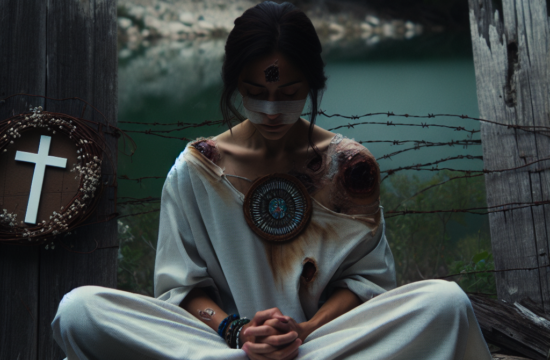==> Thank you for reading this post! Click Here If you are looking for support and Victory over PTSD.
Understanding PTSD in Combat Veterans
The Impact of Combat Experience
PTSD, or Post-Traumatic Stress Disorder, is something that many combat veterans face after returning from active duty. It’s not just about experiencing a traumatic event; it’s about how those experiences echo long after the battle is over. I’ve seen firsthand how the sights and sounds of combat can replay in a veteran’s mind, making it hard to adjust to civilian life.
There’s this heavy weight that hangs over them, affecting relationships, careers, and their overall sense of well-being. Many veterans struggle with nightmares, anxiety, and feelings of isolation which can lead to a vicious cycle where they feel trapped in their own minds.
Understanding PTSD is the first step toward recovery. Being able to recognize its signs and knowing that it’s a common experience can provide veterans with a sense of community and validation. It’s all about opening the door to support and healing.
Therapeutic Approaches to Recovery
Traditional Therapy Methods
For me, discovering traditional therapy was a game-changer. Engaging in talk therapy with a skilled clinician allowed me to express feelings that I’d been bottling up. I learned to process traumatic memories in a safe environment, which was crucial for healing.
Many veterans benefit from Cognitive Behavioral Therapy (CBT), which helps you challenge and change unhelpful thoughts and behaviors. This method empowers individuals to replace negative thought patterns with more positive ones, leading to a healthier mental state.
Moreover, Eye Movement Desensitization and Reprocessing (EMDR) has also shown impressive results for many veterans. This therapy helps rewire the brain’s response to trauma, making painful memories less overwhelming.
The Role of Peer Support
Finding Community
You know, at times, it feels like no one really understands what you’re going through. That’s where peer support enters the scene. Connecting with fellow veterans who’ve walked a similar path can provide a safe space to share experiences and feelings without judgment.
Groups like Vet Centers or local community organizations often host meetings where veterans can come together. Sharing laughs, stories, and even tears fosters a healing environment. Belonging to such a community has been one of the most beneficial aspects of my own recovery journey.
It’s incredible how knowing you’re not alone can ease the burden. The camaraderie developed within peer groups creates a network of support that doesn’t just uplift; it empowers veterans to seek further help when needed.
Adopting Healthy Lifestyle Changes
The Importance of Physical Activity
Exercise is more than just skipping the gym; it’s a vital part of healing from PTSD. Engaging in physical activities, whether it’s running, swimming, or even yoga, has profound benefits for mental health. I can’t emphasize enough how a simple jog can clear my head and elevate my mood.
Physical activity releases endorphins, which are chemicals in the brain that act as natural painkillers and mood elevators. When I’ve felt overwhelmed, those moments I spent outside moving my body transformed my mindset significantly.
Get Support and Help with Recovery! Visit us for more Information and Support
Moreover, activities like martial arts or team sports can also help restore confidence and provide a structured outlet for emotions. It’s about finding what you love and letting it guide you toward recovery.
Mindfulness and Stress Reduction Techniques
The Power of Meditation
Meditation was something I was skeptical about at first. I thought, “How can sitting quietly help with my chaotic thoughts?” But let me tell you, once I gave it a fair shot, I found a profound peace in those quiet moments. Meditation teaches mindfulness, and that practice can significantly lessen the grip of PTSD on daily life.
Practicing mindfulness encourages present-moment awareness, which helps reduce anxiety and stress. I implemented short meditation sessions into my routine, and over time, they made a big difference in how I reacted to triggers.
Incorporating breathing exercises complements meditation in alleviating stress. Deep breathing can lower your heart rate and help you regain control in moments of panic or distress. Together, they form a powerful toolkit for veterans seeking to regain their sense of self.
Conclusion
Recovery from PTSD is a challenging journey, but it’s one filled with hope and potential for a better tomorrow. By understanding PTSD, engaging in therapeutic approaches, seeking peer support, adopting healthy lifestyle changes, and practicing mindfulness, we can pave the way to wellness.
As I reflect on my own path, I encourage my fellow veterans to embrace their healing journey, knowing that each step forward, no matter how small, is progress. Remember, you’re not alone in this fight.
FAQ
1. What is PTSD?
PTSD, or Post-Traumatic Stress Disorder, is a mental health condition that can occur after experiencing or witnessing a traumatic event. Many combat veterans experience PTSD due to their military service.
2. How can therapy help with PTSD recovery?
Therapy provides a safe space for individuals to discuss and process their traumatic experiences. Traditional methods like CBT and EMDR can be particularly effective in helping veterans navigate their feelings and memories.
3. Why is peer support important for veterans?
Peer support offers a sense of community among veterans who understand each other’s experiences. Sharing stories and challenges with others who’ve been through similar situations can foster healing and connection.
4. What lifestyle changes can aid in PTSD recovery?
Incorporating physical activity into daily life, such as exercise or sports, can effectively manage symptoms. Healthy eating, getting enough sleep, and engaging in hobbies also play a crucial role in overall wellness.
5. How can mindfulness be implemented in daily life?
Mindfulness can be practiced through meditation, deep breathing exercises, or simply being present in the moment. Regular practice can help reduce anxiety and improve emotional regulation over time.













